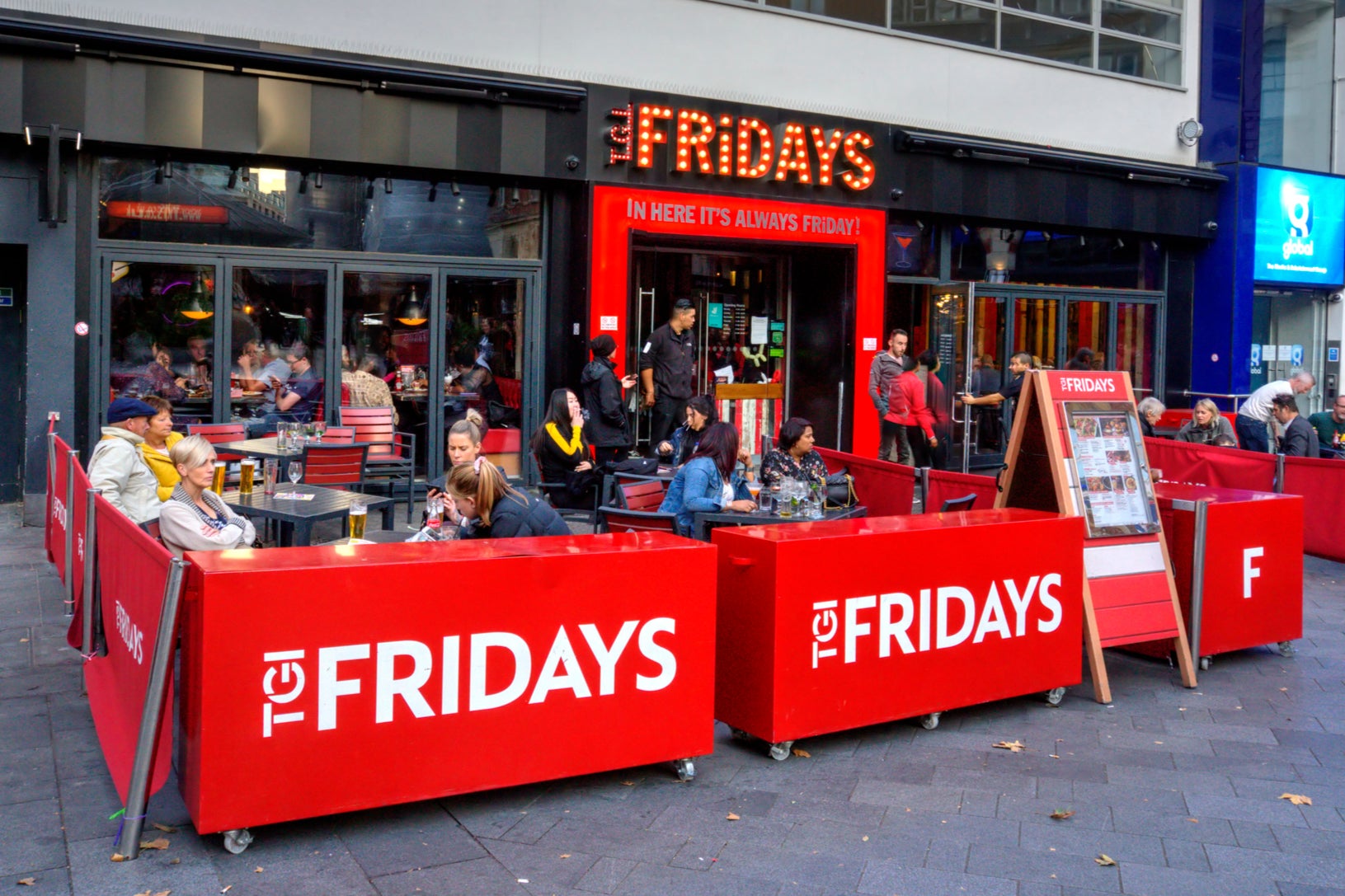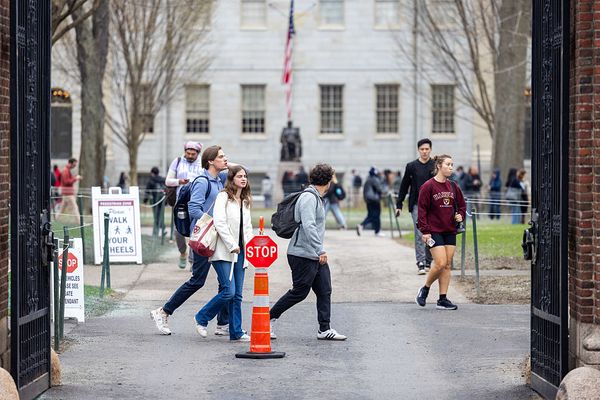For a generation of Brits, nothing said celebration quite like Pizza Hut. You knew you were in for a treat when your parents caved to the lure of bottomless Pepsi, industrial-strength cheese and the social status of a trip to the salad bar. Or maybe you remember the joys of a TGI Fridays where the towering burgers, sticky ribs and potato skins arrived with a side order of weaponised enthusiasm.
Chain restaurants, once the rock stars of British dining, now find themselves in retirement, their glory days behind them. Take Pizza Hut: its biggest UK franchisee is scrambling for cash, thanks to rising costs and a public with a newfound fondness for artisanal sourdough. Prezzo is shuttering branches faster than you can say “al forno” and TGI Fridays recently took an unwanted detour through administration.
It’s impossible not to feel a pang of nostalgia at the news. The idea, of course, was an American export, with the first chain restaurant, Wimpy, opening here in 1954 – Pizza Hut didn’t catch on until 1973, a year before McDonald’s. But chains were never about Michelin stars or locavore bragging rights. For many of us, they have been our first defining memory of hospitality. They are where we learnt how to order from a menu, where a fistful of greasy napkins and a Coca-Cola (full fat, of course) felt indulgent, and where unlimited ice cream was the height of sophistication. Hosting a primary school birthday there was practically a rite of passage. These places introduced generations of Brits, even the snobs, to the joy of dining out – affordable, reliable and a little bit exciting. Kids loved it, parents tolerated it and nobody complained about the bill. So what happened?
The quick answer: everything. The longer one: chains like Pizza Hut and TGI Fridays are up against a triple threat of soaring costs, shifting tastes and an economic climate that makes dining out feel about as sensible as taking out a payday loan.
The hospitality industry has faced a litany of crises over the past few years. Rebuilding after the pandemic came with a VAT hike from 5 to 20 per cent, just as businesses were struggling to recover. Brexit threw in staff shortages, red tape around imports and a weaker pound. The Ukraine-Russia war sent energy prices soaring, while the cost of living crisis left diners tightening their belts.
Now, the Budget has been the final straw, with rising national insurance contributions (NICs) and higher wages hitting hospitality hard. Pizza Hut’s largest franchisee expects its annual costs to jump by £4m – a bill so steep, it’s scrambling to find a buyer or new funding. And this is just one example of an industry-wide crisis. As Kate Nicholls, chief executive of UKHospitality, explains: “Hospitality is braced for a £3.4bn cost increase as a result of changes in the Budget, and that will impact jobs and push up prices, which we know will be a struggle for customers.” For chains operating sprawling venues with legacy rents and hefty overheads, there’s no easy way to balance the books.
Fine dining establishments face many of the same pressures. For example, Marcus Wareing closed his eponymous restaurant at The Berkeley last year, citing challenges the industry can no longer ignore, and Michel Roux Jr’s Le Gavroche shut its doors in January after over 50 years of service. Wareing and Roux may operate in a different stratosphere than Pizza Hut, but their closures tell a similar story. As Nicholls points out: “The reality is that businesses are unable to absorb any more cost, having taken on so much over the past four years, and it is consumers and team members that will feel the effects.”
The question isn’t whether chains are in trouble – it’s whether the entire dining landscape is at breaking point. And for consumers who’ve long relied on the affordability and consistency of chains, what happens when even these stalwarts start to falter?

Chain restaurants were designed to be affordable, democratic places to eat. They weren’t about exclusivity or experimentation – they were there for the Friday family dinner, the motorway service stop and the pre-cinema meal. But now a margherita at Pizza Hut will set you back £13.49; at Pizza Express, it’s £13.45. Compare that to Napoli on the Road in Chiswick, where Michele Pascarella – literally dubbed the world’s best pizza chef – charges £12.90. Or Crisp Pizza, consistently hailed as one of London’s finest, where the same classic pie costs just £12. Suddenly the allure of a stuffed crust isn’t quite what it used to be.
The problem for chains is that they’re stuck in the middle. They’re too expensive to be budget-friendly but can’t match the quality or experience of independents. Diners willing to spend over £13 on a pizza are voting with their wallets for artisan toppings and perfectly blistered crusts, not the reliability of a lukewarm pepperoni.
Consumers are left wondering what they’re paying for. A key USP factor for chain restaurants has always been their predictability but in today’s fast-moving dining landscape, that predictability is part of the problem. Diners want value for money but value also now means quality ingredients, local sourcing and authenticity – a sense that what you’re eating has been made with care and reflects the personality of the person who made it.
The reality is that businesses are unable to absorb any more cost, having taken on so much over the past four years, and it is consumers and team members that will feel the effects
This is where chains struggle to compete. Authenticity, by its nature, isn’t something that scales well. How can a restaurant feel personal when it’s one of 100 identical outlets, each with a different chef following the same formula? For independents, every dish tells a story – of a chef’s heritage, a local supplier or a family recipe. For chains, the story is usually one of consistency, and while that was once a strength, it now feels impersonal in a dining scene that prizes individuality.
For families who rely on chain restaurants as an affordable dining option, these shifts sting. Independents may offer better food but they’re not always accessible in smaller towns or suited for budget-conscious diners. The worry isn’t just about fewer places to eat; it’s about the erosion of dining out as an accessible treat. “If the government wants to keep a lid on inflation, protect jobs and help businesses,” Nicholls urges, “it must urgently rethink its changes to employer NICs.” She has called for measures such as a new employer NICs band for lower earners or exemptions for part-time workers to protect both businesses and their employees.
Then there’s the Instagram problem. When was the last time you saw a reel waxing lyrical about the Pizza Hut salad bar? Social media has revolutionised how people choose where to eat, and chains have largely failed to capitalise on it. Diners scroll their feeds for trending spots, viral dishes and aesthetic interiors. Chains, by comparison, feel staid and uninspired, offering little to entice a double-tap or a share. Some have dipped their toes into social media campaigns – for example, Chipotle was the first chain to join TikTok, Nando’s launched a chat show about mental health and Leon partnered with Joe Wicks – but they’ve struggled to create the kind of buzz independents generate effortlessly. Without a compelling visual or a story to tell, a trip to a chain feels less like an adventure and more like a fallback option.
Oddly, chains’ biggest saviour in recent years has also been their undoing. Delivery platforms like Deliveroo and UberEats have allowed chains to pivot away from struggling dine-in models, creating dark kitchens and optimising their menus for takeaway. For Pizza Hut, this shift has been a tale of two businesses: HWS, which operates all of its dine-in restaurants in Britain, is in trouble, while its large number of delivery outlets – run by separate franchisees – remain unaffected. But the rise of delivery has also turned dining into an entirely different experience – one where consistency matters less than quality, and price becomes the main selling point.
It’s not all woe for chains. Newer kids on the block are faring better: Five Guys saw revenues rise by more than £90m in the last year and despite a small pre-tax loss, Franco Manca’s turnover increased by more than 20 per cent. Brands like Nando’s and Wagamama have also cracked the code. Nando’s leans on its cheeky branding and addictive peri-peri and has only reported a loss once, in 2021, while Wagamama, which has seen a robust performance since it went private last year, keeps things fresh with plant-based bowls and health-conscious fare. Both feel modern, relevant and, crucially, good value.
The odds aren’t great. Legacy costs, a challenging economic climate and a public craving craft over convenience leave many chains looking outdated. Pizza Hut operates large, costly venues designed for a different era. Independents, meanwhile, are leaner and nimbler, with smaller spaces and hyper-focused menus. It’s no wonder they can do better at a lower price point. They’re walking the same tightrope with rising energy bills and ingredient costs. The difference is, they’ve got momentum. Diners are rooting for them. Chains? Not so much.
Still, it’s hard to let go. Chain restaurants weren’t perfect but they didn’t need to be. They were there for first dates, family birthdays and staycation pit stops. They were the backdrop to a million small moments, the kind of places you didn’t think about until suddenly, they were gone.
Perhaps the future of chains lies in finding a way to tap into that nostalgia without clinging to the past – a way to recapture the joy of dining out for families and first-timers while embracing the quality and individuality diners now demand. Because if they can’t evolve, they risk becoming exactly what no restaurant ever wants to be: a childhood memory.







